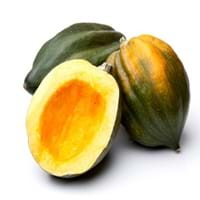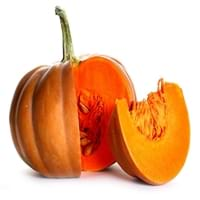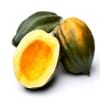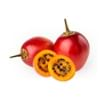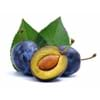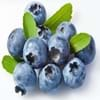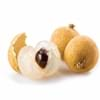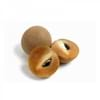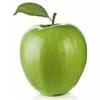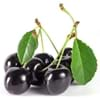Health Benefits
Anti-inflammatory properties, Arthritis treatment, Regulates Blood Sugar
Arthritis treatment, Cancer prevention, High Cholesterol Regulation, Lower blood pressure, Helps Prevent cataract, Prevents gall stones, Ulcer treatment, Weight loss properties
General Benefits
Boosts immune system, Controls blood sugar levels, Digestive aid
Boosts respiratory health, Eliminate parasites and infections, Protects against birth defects, Strengthens bones
Skin Benefits
Nourishes skin, Protects skin from oxidative stress
Heals sunburn, Hydrates skin, Skin rejuvenation
Hair Benefits
Prevents hair loss, Promotes longer and healthier hair, Regulates hair growth
Regulates hair growth
Allergy Symptoms
Asthma, Red rash, Swelling of mouth, tongue or lips
Abdominal cramps, Anaphylaxis, Digestive Problems, Dizziness, Eczema, Fainting, Hives, Inflammation, Itching, Tingling sensation in wrist and face, Vomiting, Wheezing
Side Effects
Diarrhoea, Vomiting
Kidney and gallbladder diseases
Best Time to Eat
Along with meal, As a snack in the late afternoon, Don't eat after meal, Eat the fresh ones, avoid mixing with any other foods, don't eat after meal.
Along with meal, Don't eat after meal, Morning time (before lunch)
Vitamin B5 (Pantothenic Acid)
Vitamin C (Ascorbic Acid)
Vitamin E (Tocopherole)
Not Available
Vitamin K (Phyllochinone)
Not Available
Lutein+Zeaxanthin
Not Available
Phytosterol
Not Available
Calories in Fresh Fruit with Peel
Calories in Fresh Fruit without Peel
Not Available
Calories in Frozen Form
Not Available
Calories in Dried Form
Not Available
Season
Winter
All seasons
Varieties
Bush Table Queen, Heirloom Table Queen, Festival Hybrid, Early Acorn Hybrid, Table Ace, Ebony and Cream of the Crop
Jarrahdale, Peanut, Lakota, Cow, Sugar, Caribean, Red kuri, Buttercup and Pink lady
Color
Dark green, Green-yellow, Orange green
Blue, Green, Orange, Red, White
Inside Color
Yellow
Creamy Yellow
Taste
Sweetish
Creamy, Soft, Sweet
Origin
Central America, North America, Unknown
Mexico
Soil Type
Well-drained
Clay loam, Sandy loam, Well-drained
Climatic Conditions
Cold, Sunny
Warm to hot climate
Facts about
- It was named as Acorn Squash for its resemblance to a large ribbed acorn.
- It is said that squash was being grown in Mexico as long as 10,000 years ago.
- It was the first food cultivated by native American Indians.
- The name pumpkin has its roots in the Greek word ‘pepon’, meaning ‘large melon’.
- The largest pumpkin ever grown weighed 1,140 pounds.
- Pumpkins were once known for removing freckles & curing snake bites.
Other Countries
Egypt, India, Iran, Italy, Mexico, Russia, Turkey, Ukraine, United States of America
Egypt, India, Indonesia, Iran, Italy, Mexico, Russia, Spain, United States of America
Top Importer
Costa Rica
United States of America
Top Exporter
United States of America
China
Botanical Name
Cucurbita Pepo
Cucurbita maxima
Synonym
Winter Squash
Cucurbita pepo, Squash
Subkingdom
Tracheobionta
Tracheobionta
Division
Magnoliophyta
Magnoliophyta
Class
Magnoliopsida
Magnoliopsida
Subclass
Dillenhidae
Dillenhidae
Order
Cucurbitales
Cucurbitales
Family
Cucurbitaceae
Cucurbitaceae
Genus
Cucurbita
Cucurbita
Species
Pepo
Cucurbita mixta
Generic Group
Not Available
Not Available
Difference Between Acorn squash and Pumpkin
We might think that Acorn squash and Pumpkin are similar with respect to nutritional value and health benefits. But the nutrient content of both fruits is different. Acorn squash and Pumpkin Facts such as their taste, shape, color, and size are also distinct. The difference between Acorn squash and Pumpkin is explained here.
The amount of calories in 100 gm of fresh Acorn squash and Pumpkin with peel is 40.00 kcal and 26.00 kcal and the amount of calories without peel is Not Available and 30.00 kcal respectively. Thus, Acorn squash and Pumpkin belong to Low Calorie Fruits and High Calorie Fruits category.These fruits might or might not differ with respect to their scientific classification. The order of Acorn squash and Pumpkin is Cucurbitales and Cucurbitales respectively. Acorn squash belongs to Cucurbitaceae family and Pumpkin belongs to Cucurbitaceae family. Acorn squash belongs to Cucurbita genus of Pepo species and Pumpkin belongs to Cucurbita genus of Cucurbita mixta species. Beings plants, both fruits belong to Plantae Kingdom.
